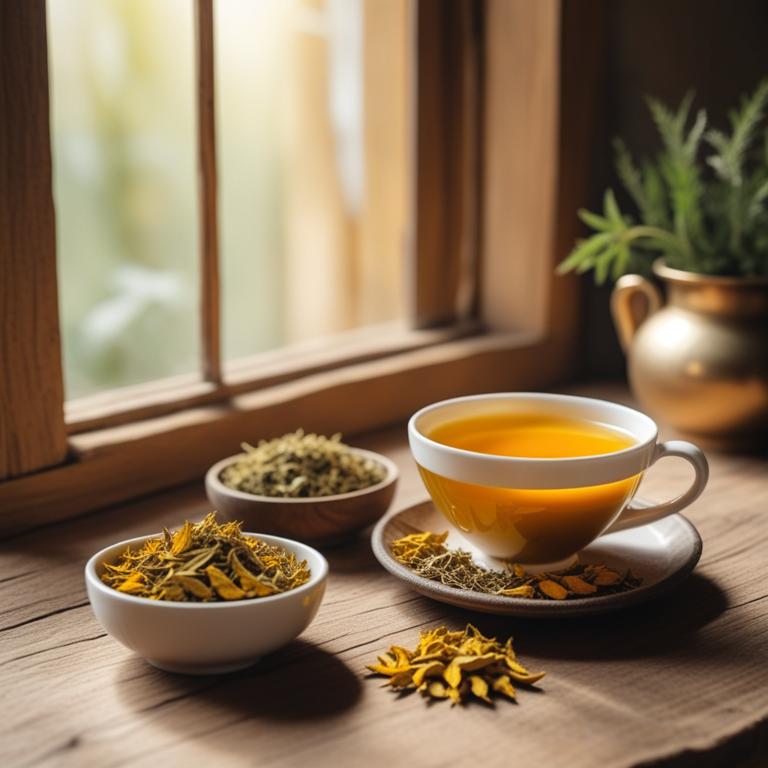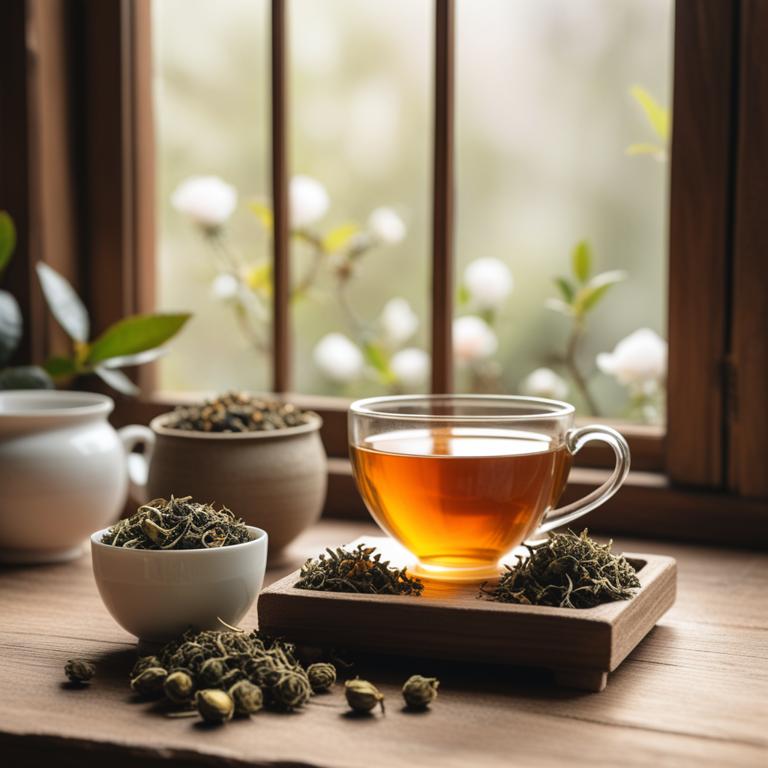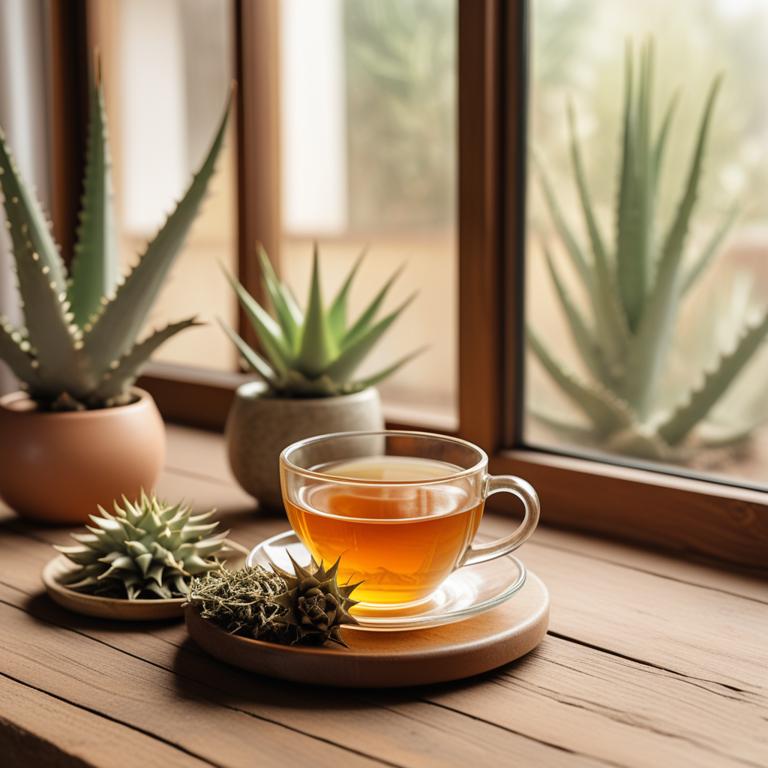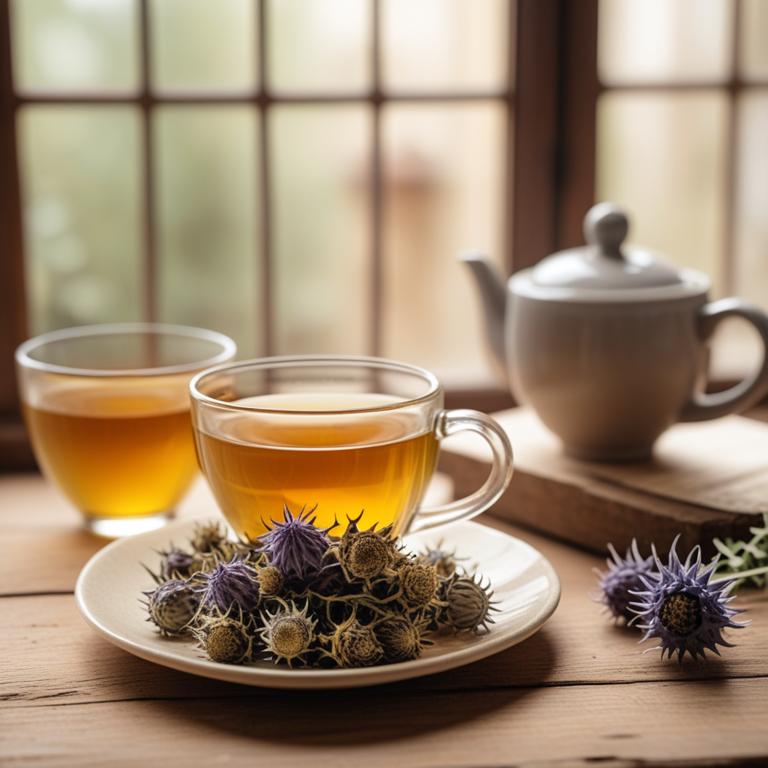8 Herbal Teas For Glowing Skin

Herbal teas can be a great way to achieve glowing skin.
Echinacea purpurea is an herb that contains antioxidants, which help protect your skin from damage caused by free radicals. This means your skin will look smoother and more even-toned. Camellia sinensis, the tea plant, is also high in antioxidants and has anti-inflammatory properties that can reduce redness and irritation.
Drinking Ginkgo biloba tea may also help improve circulation, which can give your skin a healthy, radiant glow. When you drink herbal teas like these, the antioxidants and other beneficial compounds are absorbed into your bloodstream and can help repair and protect your skin from the inside out. As a result, your skin may look brighter, more even-toned, and more youthful. This can be especially beneficial if you have skin concerns like acne, fine lines, or uneven skin tone.
Drinking herbal teas can also have other benefits, like improving your mood and reducing stress, which can further help your skin look its best.
- 1. Echinacea purpurea
- 2. Camellia sinensis
- 3. Ginkgo biloba
- 4. Rosmarinus officinalis
- 5. Zingiber officinale
- 6. Aloe barbadensis
- 7. Silybum marianum
- 8. Curcuma longa
1. Echinacea purpurea

Echinacea purpurea teas contains active constituents like alkylamides, caffeic acid, and rosmarinic acid.
These compounds have anti-inflammatory and antioxidant properties, which help to soothe and protect the skin. The alkaloids in Echinacea, such as echinacoside and cichoric acid, have been shown to inhibit the production of pro-inflammatory enzymes, reducing redness and irritation. This can lead to a reduction in the appearance of acne and other skin issues, resulting in a more even-toned and glowing complexion.
Additionally, the antioxidants in Echinacea help to neutralize free radicals, which can cause damage to the skin and contribute to signs of aging.
- Gather 1 cup of fresh or dried Echinacea purpurea flowers.
- Add 1 tablespoon of the flowers to a teapot or a heat-resistant cup.
- Pour 1 cup of boiling water over the flowers. Let it steep for 5-7 minutes.
- Strain the tea into another cup using a fine-mesh sieve or cheesecloth.
- Drink 1 cup of the tea 2-3 times a week to support healthy skin.
2. Camellia sinensis

Camellia sinensis teas contains antioxidants like theaflavins and thearubigins, which help protect the skin from damage caused by free radicals.
These compounds have anti-inflammatory properties, which can reduce redness and irritation that can make skin appear dull. Theaflavins also have antimicrobial properties, which can help control the growth of bacteria that can cause acne and other skin problems. Additionally, Camellia sinensis teas contains catechins, which have been shown to improve skin elasticity and firmness by increasing collagen production.
This can help skin look smoother and more radiant, giving it a healthy and glowing appearance.
- Gather 1 cup of Camellia sinensis leaves (black, green, or white tea). Rinse the leaves with water to remove impurities.
- Heat 1 cup of water to 180°F (82°C). Pour the hot water over 1 teaspoon of tea leaves in a cup or teapot.
- Steep the tea for 1-3 minutes, depending on your desired strength and flavor.
- Strain the tea into another cup using a tea strainer or cheesecloth. Discard the tea leaves.
- Drink 1-2 cups of the tea per day, ideally before bedtime, to help promote glowing skin.
3. Ginkgo biloba

Ginkgo biloba teas contains flavonoids and terpenoids as its active constituents.
These compounds have antioxidant and anti-inflammatory properties that help protect the skin from damage caused by free radicals and promote healthy cell growth. The flavonoids in Ginkgo biloba, such as quercetin and kaempferol, have been shown to improve blood flow and reduce inflammation in the skin, which can help to reduce the appearance of fine lines and wrinkles. The tea's antioxidant properties also help to protect the skin from environmental stressors and damage caused by UV radiation.
By promoting healthy cell growth and reducing inflammation, Ginkgo biloba teas may help to give the skin a more even and radiant appearance.
- Gather 1 cup of boiling water and 1 teaspoon of Ginkgo biloba leaves.
- Steep the Ginkgo biloba leaves in the boiling water for 5-7 minutes.
- Strain the tea into a cup using a tea strainer or a piece of cheesecloth.
- Add 1 tablespoon of honey (optional) to the tea to sweeten it.
- Drink the tea once or twice a day to promote healthy and glowing skin.
4. Rosmarinus officinalis

Rosmarinus officinalis teas contains carnosic acid and camphor as its bioactive constituents.
These compounds have antioxidant and anti-inflammatory properties that help protect the skin from damage caused by free radicals and promote healthy skin cell growth. The antiseptic properties of camphor also help to reduce the occurrence of acne and other skin infections. Additionally, the antioxidant properties of carnosic acid help to reduce the appearance of fine lines and wrinkles by protecting the skin from oxidative stress.
By promoting healthy skin cell growth and reducing skin damage, Rosmarinus officinalis teas can help to give the skin a more radiant and glowing appearance.
- Gather 1 cup of fresh or dried Rosmarinus officinalis leaves.
- Measure 1 tablespoon of the Rosmarinus officinalis leaves and place them in a tea infuser or a heat-resistant cup.
- Boil 1 cup of water and pour it over the Rosmarinus officinalis leaves in the tea infuser or cup.
- Let the mixture steep for 5-7 minutes before straining it into another cup.
- Drink the tea warm or at room temperature, 2-3 times a week for glowing skin.
5. Zingiber officinale

Zingiber officinale teas contains active constituents like gingerols and shogaols.
These compounds have anti-inflammatory and antioxidant properties, which help reduce redness and irritation in the skin. The gingerols and shogaols in Zingiber officinale teas also have antimicrobial properties, which can help fight off bacteria and other microorganisms that can cause skin problems. The antioxidants in these teas, such as gingerols and shogaols, can also help protect the skin from damage caused by free radicals.
By reducing inflammation and protecting the skin from damage, Zingiber officinale teas can help promote healthy and glowing skin.
- Gather 1 cup of water and 1 teaspoon of fresh ginger root (Zingiber officinale).
- Wash the ginger root and peel it. Then, chop it into small pieces.
- Boil the water in a saucepan and add the chopped ginger. Let it simmer for 5-7 minutes.
- Strain the mixture into a cup and discard the ginger pieces. Add 1 tablespoon of honey (optional) for taste.
- Let the tea cool down, then drink it. You can drink it 1-2 times a day for glowing skin.
Zingiber Officinale Tea on Amazon
FGO Organic Ginger Tea, 100 Count, Eco-Conscious Tea Bags, Caffeine Free, Packaging May Vary (Pack of 1)
Disclaimer: We earn a commission if you click this link and make a purchase at no additional cost to you.
6. Aloe barbadensis

Aloe barbadensis teas contains a high concentration of aloin, aloe-emodin, and aloe-vertin, which are powerful compounds that help to promote glowing skin.
Aloin has anti-inflammatory properties, which reduce redness and swelling, while aloe-emodin has antibacterial properties that fight off acne-causing bacteria. Aloe-vertin, on the other hand, helps to hydrate the skin, locking in moisture and leaving skin looking plump and healthy. The combination of these compounds in aloe barbadensis teas helps to soothe and calm the skin, reducing the appearance of fine lines and wrinkles, and giving skin a radiant glow.
By consuming aloe barbadensis teas, you can support your skin's natural ability to regenerate and renew itself, leading to a more even and healthy-looking complexion.
- Gather 2 cups of fresh Aloe barbadensis gel and 1 cup of boiling water.
- Add 2 tablespoons of honey to the boiling water and stir until dissolved.
- Combine the Aloe gel and honey-infused water in a large cup.
- Mix well and let it cool down to a comfortable temperature.
- Strain the mixture and drink the tea slowly, 2 times a day, for best results.
7. Silybum marianum

Silybum marianum teas contains boiactive constituents like silymarin and flavonoids, which have antioxidant properties that help protect the skin from damage.
These antioxidants neutralize free radicals that can cause oxidative stress, a major contributor to dull and aging skin. Silymarin also has anti-inflammatory properties, which reduce redness and irritation, promoting a healthy and even skin tone. The flavonoids in Silybum marianum teas have been shown to improve skin elasticity and firmness, giving the skin a more youthful appearance.
By reducing inflammation and improving skin texture, Silybum marianum teas can help achieve a glowing and radiant complexion.
- Gather 1 cup of Silybum marianum leaves and flowers.
- Combine the leaves and flowers with 2 cups of boiling water in a saucepan.
- Steep for 10-15 minutes, then strain the mixture through a cheesecloth or a fine-mesh sieve.
- Add 1 tablespoon of honey and 1 cup of cold water to the strained mixture.
- Drink 1 cup of the tea 2-3 times a week for best results.
8. Curcuma longa

Curcuma longa teas contains curcuminoids, such as curcumin, demethoxycurcumin, and bisdemethoxycurcumin, which are powerful antioxidants.
These curcuminoids have anti-inflammatory properties, which help to reduce redness and irritation in the skin. They also have antioxidant properties, which neutralize free radicals and protect the skin from damage caused by pollution and UV light. The curcuminoids in Curcuma longa tea have been shown to improve skin elasticity and collagen production, giving the skin a smoother and more even appearance.
Regular consumption of Curcuma longa tea may help to reduce the appearance of fine lines and wrinkles, resulting in a more radiant and glowing complexion.
- Boil 1 cup of water in a kettle or on the stove.
- Add 1 teaspoon of dried Curcuma longa powder to a cup.
- Pour the boiling water over the Curcuma longa powder in the cup.
- Let it steep for 5-7 minutes, then strain the liquid.
- Drink the Curcuma longa tea 2-3 times a week for glowing skin.